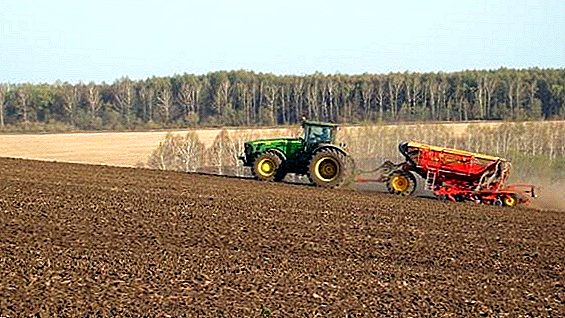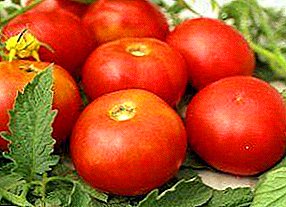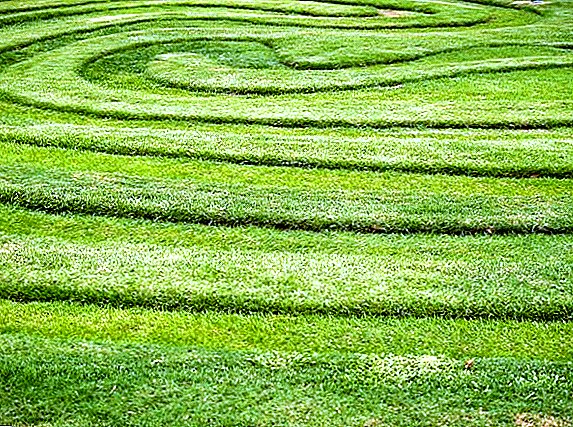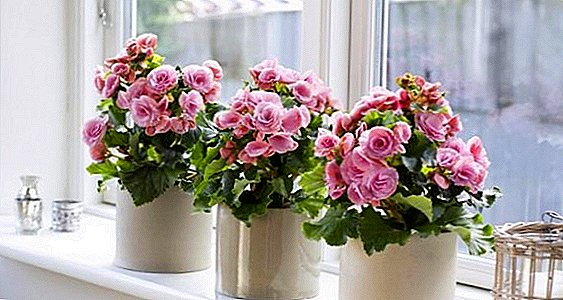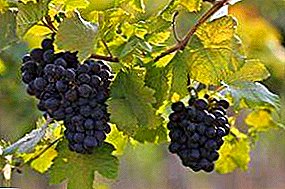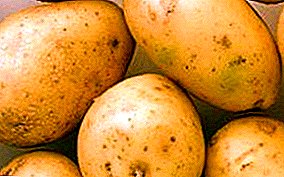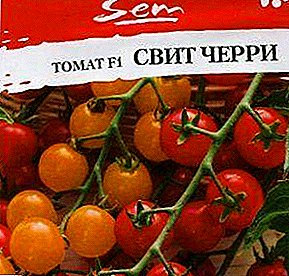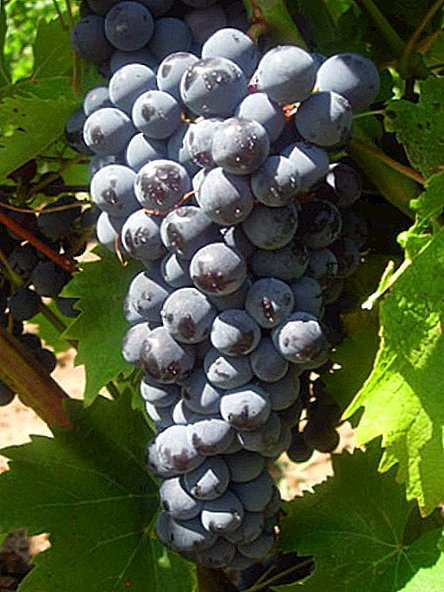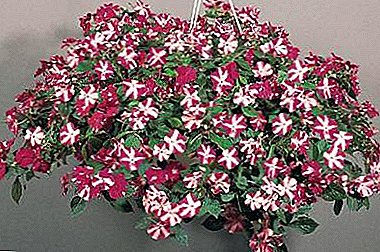
Ampute balsam (impatiens, impatiens) - decorative culture, suitable for growing at home.
Due to the luxurious appearance and long flowering balsam used to decorate the rooms, terraces, suburban areas.
With the advent of cold weather culture is brought into the house. The article will look at the history of appearance, appearance and its features, as well as learn how to properly care for the flower at home and how to propagate.
History of origin and description
Accurate information on the origin of the balsam is not. It is only known that the subtropics of North America and Africa are the homeland and habitat. Impatiens was brought to Europe in 1596, after which it became very popular. The most decorative is considered to be the amulet balsam of Waller Terry. He is the "parent" of many hybrids. Impatiens is a perennial plant, but is often cultivated as an annual.
Balsam Waller is different:
- Abundant flowering.
- Juicy, brittle branched stems up to 60 cm.
- Reddish brown leaves.
- Shoots 30 cm in length.
Inflorescences appear early. Flowering lasts throughout the year. So many flowers that they cover all the leaves. Flowers in diameter are 5 cm. They are single or gather in inflorescences. Consist of 5 sepals and five-membered corolla, connected in pairs or individual petals.
Pedicle long. The fruit is a box. The root system is powerful and grows into drainage holes when there is not enough space.
Appearance and features
Balsam belongs to the family balsamine. The leaves are wavy at the edges, droplets form at the tips at high humidity. The flowers are located in the axils of the leaves and have a variety of colors:
- White.
- Red.
- Orange.
- Lilac.
- Pink
The flowers are bicolor and with a spot in the central part. There are terry hybrids with multi-colored leaves. Culture blooms from early June to late September in the open field.
At the end of flowering green fruit ripen, from which the boxes are formed with seeds. Balsam has a feature: if you touch the dry boll - the seeds fly apart.
Plant photo
Here you can see photos of balsam:





Landing
Lighting and location
When planting culture in the open ground, you must choose solar, slightly pritёnёn place. At home, balsamines are placed on the eastern and western windowsills.
Soil requirements
Ampute balsam is planted in a friable and slightly acidic substrate. Acidity in the range of 5.8-6 pH. To prepare the soil mixture independently, take equal components:
- River sand.
- Leafy ground.
- Peat.
- Vermiculite
You can buy in the flower shop ready substrate.
rules
Seedlings are prepared for seedlings in mid-March. They are pre-disinfected in a solution of potassium permanganate. Seed Planting Algorithm:
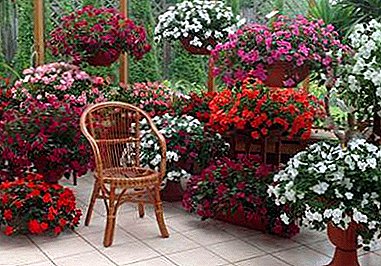 Prepare containers with the substrate and spread the planting material at a distance of 2-3 cm from each other.
Prepare containers with the substrate and spread the planting material at a distance of 2-3 cm from each other.- Press the seeds a little into the ground and sprinkle with sand.
- Lightly water the soil.
- Cover the seedling container with glass or plastic to keep it warm.
The container with the seedlings is placed in a warm place with diffused light. Temperature regime for germination + 20-25 degrees. For balsam direct sunlight is harmful.
Every day you need to remove the glass or film for ventilation. Ensure that the soil does not dry out. When the 3 leaf appears, pick the seedlings.
Pot choose not too big. Balsam feels comfortable and cramped. Drainage must be placed in the tank - for example, expanded clay. Pour the substrate and place the seedling.
After planting, the plant requires daily watering. Walser balsam and its hybrids are heat-loving cultures. In the open ground planting is made not earlier than June-July. Seedlings placed at a distance of 25 cm from each other.
Flower care
In room conditions
Balsamines love moderate humidity. In the heat of their need to spray, so that the flowers do not fade.
Important! Water should not fall on the flowers. Spray only leaves.
Temperature regime in the summer - plus 25-26 degrees. In winter - not below plus 10-12 degrees. Temperature conditions can not be dramatically changed if the pots with plants are in the garden. They are brought into the house before the onset of cold weather. Ampal balsamines need bright sunshine, but they must be protected from direct rays in order to avoid leaf burns.
Watering features:
- Moisturize twice a day - in the morning and in the evening.
- Use only distilled or boiled water. Be sure to warm.
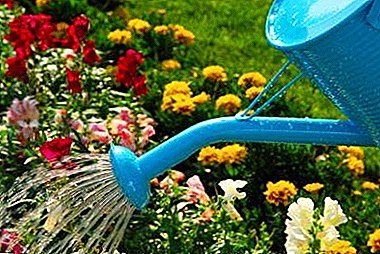 Do not let the soil coma dry out. If the ground is dry - put a container with a flower in a large bowl of water and leave until the soil becomes wet.
Do not let the soil coma dry out. If the ground is dry - put a container with a flower in a large bowl of water and leave until the soil becomes wet.- In the summer to provide abundant watering, in the winter - to reduce moisture.
- Ensure that there is no stagnation of water - the root system will begin to rot.
With a lack of liquid in balsam development slows downflowers wither and fall.
Ornamental culture is fed every 2 weeks from April to August. Use special fertilizers for flowering plants. For example, Kemira. It contains iron, copper, potassium, phosphorus, magnesium. For abundant flowering apply Kristanol once a week (1 tbsp. L / 5 l of water).
Transfer
The culture is transplanted into another pot when the root system does not fit in the drainage holes. The procedure is carried out in April or May. If the rhizomes feel comfortable, replant the plant is not necessary. After transplanting, pruning is done: shorten long stems, pinch the tops.
In the open ground
Rules for the care of garden balsamines:
- Regular watering in the evening, especially in the heat.
- Mulching the soil to preserve moisture in it.
- Weeding and removal of withered flowers.
Phosphorus and potash fertilizers are applied twice a month., fed with ash solution. It is advisable to apply liquid fertilizer to the leaves. To bush had a beautiful shape, you need to regularly pinch the tops of young branches.
Before the onset of frost, balsamines are dug up and planted in a pot. They will continue to bloom at home. At the end of budding shoots are cut and put the plant in a cool room with a temperature of not more than + 15 degrees. The rest period lasts during January and February. In late February, shoots appear on the embalm. The flower is watered heavily and transferred to heat.
Diseases and pests
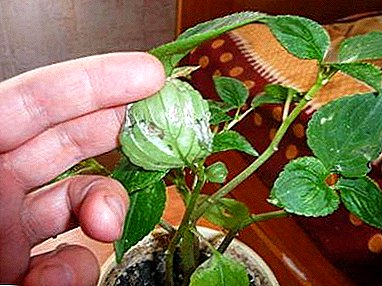 In winter, impatiens are susceptible to fungal diseases, gray rot in particular. The plant is removed from the pot, the roots are cleaned and transplanted into another container with a new substrate.
In winter, impatiens are susceptible to fungal diseases, gray rot in particular. The plant is removed from the pot, the roots are cleaned and transplanted into another container with a new substrate.- At elevated temperatures and low humidity flowering stops, the leaves wither. Dry indoor air provokes the fall of buds. Lack of light affects leaf color. Balsam loses its decorative appearance - shoots are strongly drawn out.
- Bacteriosis (watery spots on shoots and sheets) develops due to contaminated, over-fertilized soil; high temperature. The spots cover all the leaves and the plant perishes. It is necessary to fight the disease at the first sign. The flower is sprayed with Bordeaux mixture.
- If the humidity in the room is low, a spider mite can strike the flower. The leaves curl and eventually disappear. To combat the pest use drugs Neoron, Aktellik. The appearance of the whitefly signals yellowing of the leaves. Treatment is carried out by Fufaron, Decis.
To prevent diseases and the emergence of pests should follow the above rules of plant care.
Breeding features
Ampel balsam is grown from seed or bred by cuttings of shoots. Vegetative reproduction consists in the following actions:
- Choose a healthy shoot of 8-10 cm and cut it with a sharp knife.
- Place the stalk in a container with water and put in a bright place - on the window sill.
- After the roots appear, the cuttings dive into small pots (10 cm in diameter).
When rooting takes place in spring, a flowering plant will form from the process in the summer. With autumn rooting will require more heat and light.
Thus, the ampel balsam is an unpretentious decorative culture. It is grown at home in pots. In early summer, you can plant in the garden on a semi-shaded area. With the onset of cold weather, plants are dug out, transplanted back into the pot. In order for balsams to thrive, it is important to follow the rules of care. You can not replant the culture during flowering and put near the heating devices.


 Prepare containers with the substrate and spread the planting material at a distance of 2-3 cm from each other.
Prepare containers with the substrate and spread the planting material at a distance of 2-3 cm from each other. Do not let the soil coma dry out. If the ground is dry - put a container with a flower in a large bowl of water and leave until the soil becomes wet.
Do not let the soil coma dry out. If the ground is dry - put a container with a flower in a large bowl of water and leave until the soil becomes wet. In winter, impatiens are susceptible to fungal diseases, gray rot in particular. The plant is removed from the pot, the roots are cleaned and transplanted into another container with a new substrate.
In winter, impatiens are susceptible to fungal diseases, gray rot in particular. The plant is removed from the pot, the roots are cleaned and transplanted into another container with a new substrate.